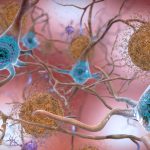By Irmak AtilganThere are three elements that make up a cocktail: the core (base spirit), the balance (sugar), and seasoning (bitters). In the relentless pursuit of a multiplex delivery method that deems possible many cell therapy features at once, the research led by Ross Wilson, Assistant Adjunct Professor of Molecular and Cell Biology at the University of California, Berkeley, and Director of Therapeutic Delivery at the Innovative Genomics Institute, led to the creation of a cocktail that offers a promising breakthrough in CRISPR ribonucleoprotein (RNP) delivery. The Peptide-enabled RNP delivery for CRISPR engineering (PERC) tool is a geneticist’s cocktail made up of three ingredients: the core (CRISPR protein), the balance (chimeric peptide), and seasoning (RNA targeted for knock-in).
One of the biggest challenges in CRISPR Cas9 gene editing is the difficulty of the delivery phase. Delivering genes, and especially large compounds like enzymes is particularly difficult due to the cell’s immune defenses. It is crucial for researchers to deliver these compounds into the cells with a method that is strong enough to surpass the cell’s defenses, but not too strong that it damages the cell in the long run.
Two of the prevailing delivery methods have been viral vectors and electroporation. Viral vectors, which are carriers or vessels, can be used to deliver the synthetic gene (known as “CRISPR Cargo”) into the cell, where it is inserted into the virus instead of its infectious DNA. This allows the virus to “infect” the cell with the gene without causing harm to the cell. However, viral vectors are extremely difficult to manufacture and the genetic code they deliver is not easily digested by the cell, resulting in the prolonged presence of the CRISPR Cargo inside the cell. This prolonged presence increases the risk of unwanted immune responses and off-target editing. Conversely, the CRISPR Cargo can be digested in the cell when delivered via electroporation, which is a method that involves isolating a cell culture and applying an electric shock to momentarily disarm the cell. Electroporation has been working efficiently in recent practices as a method of RNP delivery. However, it is very limited in use due to its cytotoxicity. This electric shock can end up damaging the cell, and even impact how cells behave, causing the delivery process to change the cell. In the context of treatment against diseases, for example, this change would mean that the cells are less able to fight cancer. Moreover, its damaging nature to the cells implies that electroporation has a one-time use. Not only is electroporation an ex-vivo method that requires external tools and hardware, but it is also highly risky to edit several cells at once with this method. In consideration of the overarching aim of developing a gene therapy against diseases such as cancer or HIV, that can carry several strategies to edit the cell, electroporation surely is not the innovation that is sought.
What is so special about PERC is that it combines the most useful features of both of these methods: PERC is not cytotoxic, and the genetic code delivered by it can be digested by the cell. The research team then needed to measure the accuracy of PERC in terms of minimizing the percentage of off-target edits. In their tests, they saw that PERC showed very low rates of off-target editing. These rates were very similar to electroporation and significantly less than viral vectors. Looking ahead, the head researcher states that:
“An enticing next step would be to create an improved cell therapy that has lots of edits, but doesn’t need any electroporation…There’s some evidence out there that multi-edit cells are going to do really well, but we can’t use CRISPR enzymes with total freedom to make those multiple edits. We want to add all the features possible into the anti-cancer cell therapy and our technology to facilitate that.”
As an example of what PERC is capable of as a delivery method, the researchers attempted to deliver enzymes into T-cells (a type of cell with significant role in the immune system) to treat HIV. People with a specific variant or non-functional form of the CCR5 receptor are immune to HIV infection, as this receptor is one of the two receptors utilized by the virus.Thus, the strategy of genetically changing the genotype of this receptor, and so making the cells immune to the HIV virus has been an attractive topic of research recently. Although CRISPR Cas9 gene editing is a candidate tool for this strategy, a double-stranded break in the DNA (which is what CRISPR Cas9 does) may be risky to break the DNA in lots of cells in the body at once. However, base editing can efficiently change the genotype of a cell without a double-stranded break, making it a favorable method for the treatment process. The research team used PERC to deliver the enzymes (RNP’s) into the cells that would perform this HIV-protective edit as an example of one way PERC could create T cells that were resistant to HIV.
Even though the efficiency rates of PERC in this process turned out to be relatively low in the lab, creating even a few HIV-resistant cells in the body could substantially help the immune system fight HIV. Normally, the immune system is disabled by the virus once infected, but even a few surviving cells can positively impact the treatment of this disease within the body. These results prove PERC as an appealing alternative that offers many advantages versus electroporation.
Moving forward, the research team will focus on two directions. The first involves advancing the application of PERC as a delivery method in anti-cancer cell therapy through collaboration with cancer clinicians. Simultaneously, they will explore the potential use of PERC in editing neurons. The team has been using “humanized mice” (genetically engineered mice that have human T-cells) to test editing T-cells inside a mammal model. Because in the test tube (in-vitro), the enzyme can just edit anything it sees. But inside the body (in vivo), the enzyme needs to be edited to find the targeted cell. An inspiring development on PERC is that the research team has recently discovered that inserting PERC inside mice’s brains via surgery shows high efficiency in successfully editing neurons.
“We moved the platform into the brain, and it looks really encouraging.”
Says Ross Wilson, the head of the team developing this promising discovery in a recent interview.
Overall, the easily manufactured, three-ingredient cocktail of PERC seems to hold great potential to facilitate swift progress in the development of cell therapy methods aimed at treating many diseases including but not limited to cancer and HIV.







